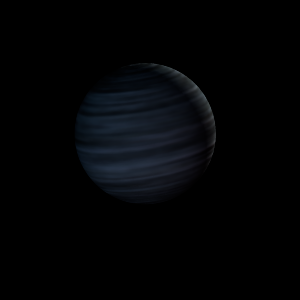|
|
Space Astro
|
Info for exoplanet "Kemaka-lapro"
| Scientific (actual) data |
|---|
| Planet | HD 190360 b |
| Planet status | Confirmed |
| Mass sini | 1.495 |
| Orbital period | 2867.9 |
| Semi major axis | 3.92 |
| Orbit eccentricity | 0.343 |
| Discovered | 2003 |
| Updated | 2020-08-14 |
| Omega | 14.7 |
| Tperi | 2459270 |
| K | 23.39 |
| Publication | Published in a refereed paper |
| Detection type | Radial Velocity |
| Mass detection type | Radial Velocity |
| Alternate names | GJ 777 A b |
| Star name | HD 190360 |
| Right ascension | 300.9° |
| Declination | 29.9° |
| Mag v | 5.71 |
| Star distance | 15.89 |
| Star metallicity | 0.24 |
| Star mass | 1.04 |
| Star radius | 1.2 |
| Star sp type | G6 IV |
| Star age | 12.11 |
| Star temperature | 5588 |
| Wikipedia article | HD 190360 b |
Back
| |
| Fictional info (?) |
|---|
| Suggested name | Kemaka-lapro |
| Planet type | Cold planet |
| It is the second-brightest natural object in the night sky after Hibriel-hy, reaching an apparent magnitude of -5 - bright enough to cast shadows at night and, often, visible to the naked eye in broad daylight.
It is named after the deity Kemaka-lapro, the spirit of love and beauty.
Kemaka-lapro's surface appears partially rippled and is similar in appearance to the Moon's, indicating that it has been geologically inactive for billions of years.
Liquid water cannot exist on the surface of Kemaka-lapro due to low atmospheric pressure, which is less than 8 percent of Hibriel-hy's, except at the lowest elevations for short periods. The volume of water ice in the south polar ice cap, if melted, would be sufficient to cover the entire planetary surface to a depth of 6 meters. |
| Atmosphere | Sulfur dioxide | 92% |
| Hydrogen chloride | 4.6% |
| Hydrogen peroxide | 2.5% |
| Ammonia | 0.37% |
| Neon | 0.2% |
| Atmospheric pressure | 0.5 bar |
 |
| Moon | Dilsut Her | Huge potato shaped rocky moon |
| Ioen'lyp | Huge almost round crater-filled moon |
| Hemas Cali | Huge irregular rocky planetoid |
| Google search for Kemaka-lapro |
|
Website by Joachim Michaelis
|
|
|
|